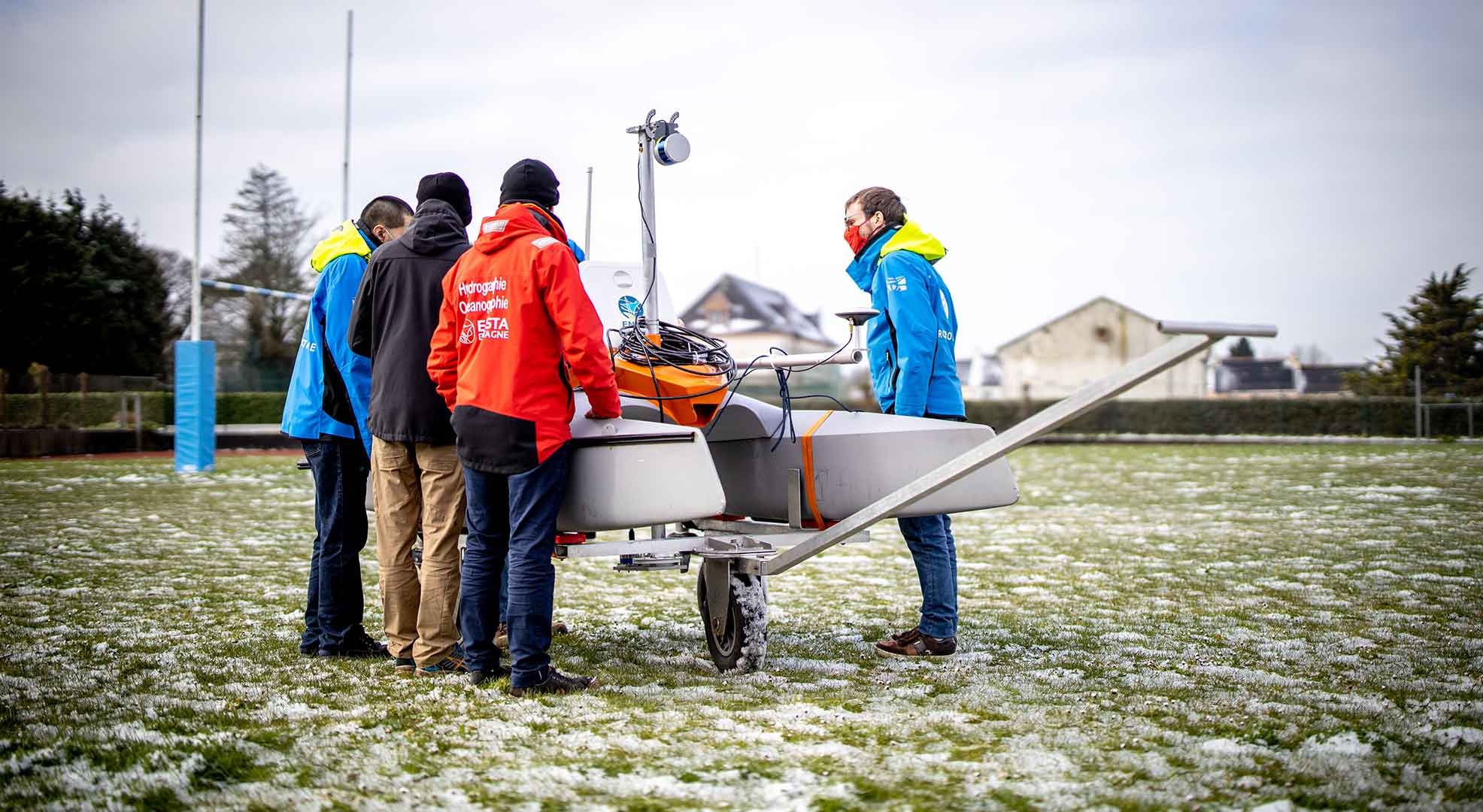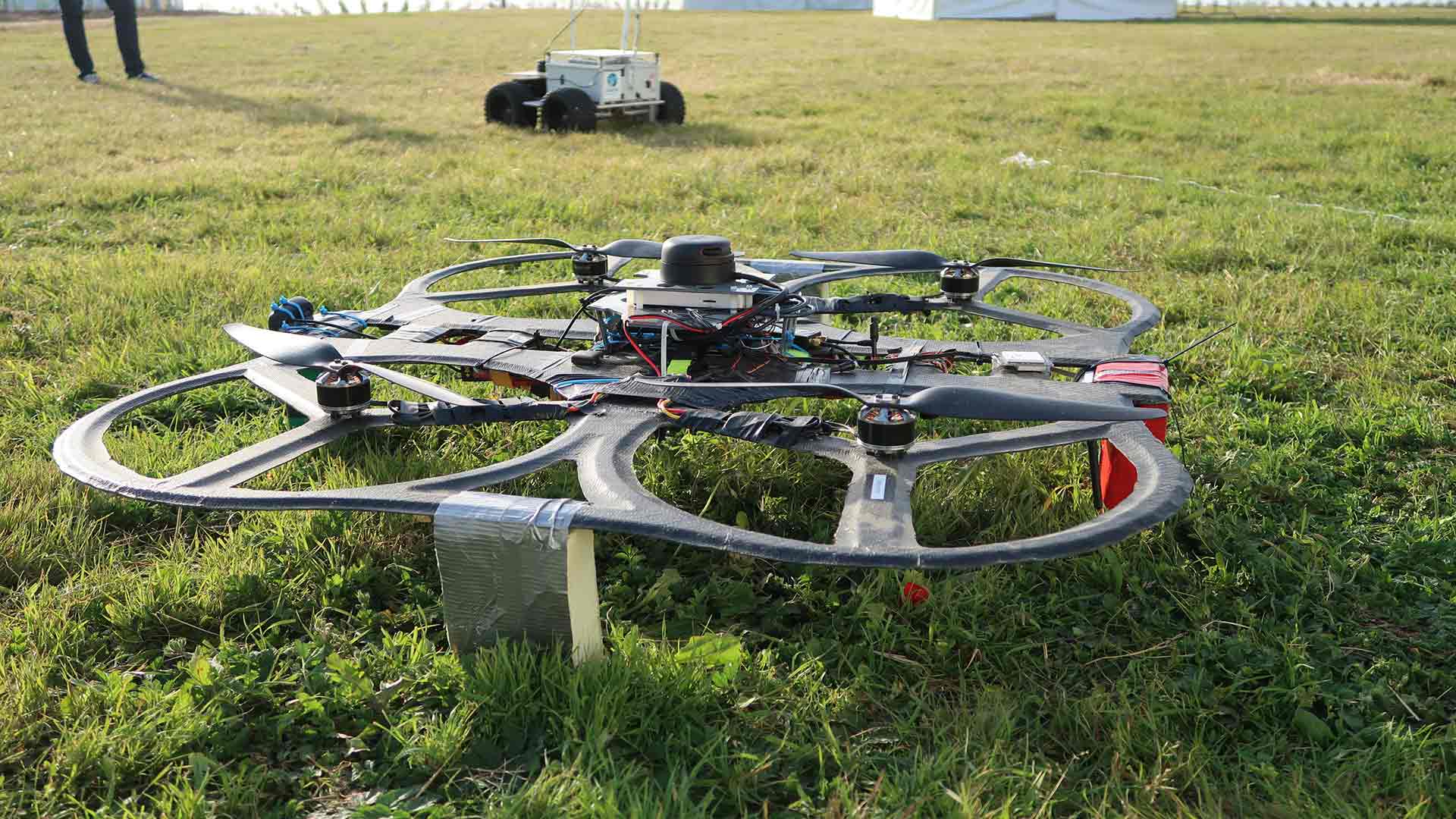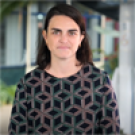
Since September 2020, Simon Rohou, autonomous robotics professor at ENSTA Bretagne, has been head of the “Marine and underwater robotics” strand of the Robotics Research Group set up by the French National Center for Scientific Research (CNRS).
This is a leadership role I have been given, no doubt about it. The aim is to develop discussions between players in the field and to spark collaborative ventures within the French community.
On that note, on November 4 & 5, during the Robotics Research Group’s national days, he presented a summary of the research currently being carried out by the French laboratories in marine and underwater robotics. "Researchers in the field are focusing on a wide range of topics including exploration of underground lakes, developing snake-shaped robots inspired by life, searching for wrecks or collaboration of underwater gliders."
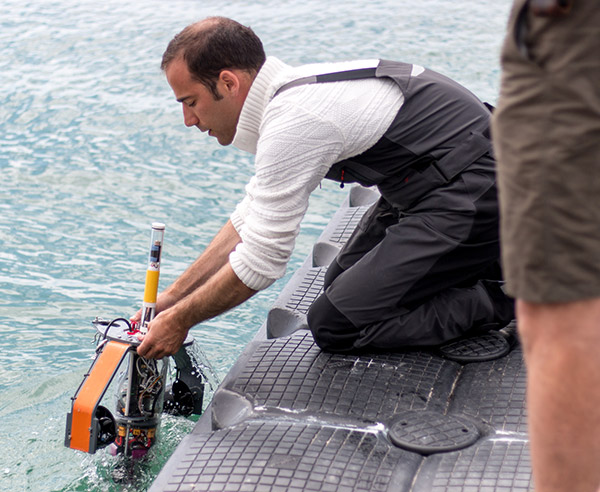
Other flagship events and highlights in the robotics calendar are organized by the ENSTA Bretagne team, including:
- Moqesm: a workshop held every two years as part of Sea Tech Week, which brings together the leading French and international players in marine robotics.
- SubMeeting: an annual fixture for manufacturers and researchers, where they can chat about their practices and test out robots, sea sensors and more.
- Guerlédan project : dedicated training for future roboticists at ENSTA Bretagne, giving them the chance to design and test out their robots and algorithms under real-world conditions. Every year, industrial partners also get involved in the event, in central Brittany.
We work closely with other research organizations as well as industrial partners. We are regularly called on for new collaborative ventures as there are still a fair few technological hurdles to overcome. Marine and underwater robotics spans a diverse range of expertise that must adapt to the pressures of the uncertain environments (the sea floor in particular) where our robots operate. That represents a great many challenges in terms of research and innovation.
Since the sea is the testing ground for ENSTA Bretagne researchers and engineers, there are lots of examples of projects led at ENSTA Bretagne which concern underwater observation:
- Autonomous sailboat robots: for more than a decade, the team has been developing regulators (control algorithms) of autonomous sailboat robots with different built-in sensors. They can, for example, take non-intrusive, silent measurements in the sea without consuming any energy. Ifremer is a long-standing partner of the school for this technology.
- Another example of autonomous robots in terms of energy: observational drifting buoys. This is about ensuring the operational safety of autonomous robots in a particularly unpredictable marine environment > find out more
- Pushing the tech boundaries of the most efficient autonomous underwater vehicles (AUV), whether in terms of geolocation during long-haul underwater missions, for data accuracy or the swift transmission of large amounts of data. Partners include the French Technology and Procurement Agency (DGA), Thales, and Shom, for naval mine hunting or mapping the sea floor.
- Developing new methods with embedded intelligence for the automated configuration of control algorithms during sailing (Naval Group).
- Developing "low-cost" robots alongside start-ups and SMEs (Kopadia): to enable a low-cost underwater robot, fitted with more basic sensors, to complete its mission, the scientific challenge entails enhancing its artificial intelligence. On that note, intelligence is found in nature and one example of the things we are looking to do is to copy cycle-based geolocation rationales (like sea turtles who always find their favorite beach).
- Archaeo-robotics: building in new sensors and scanning areas of the sea floor with a view to finding a wreck. The school thus lent significant support to the Department for Subaquatic and Underwater Archaeological Research (DRASSM) in searching for the Cordelière off the Brest coast, with an autonomous inflatable boat capable of scanning shallower depths (Boatbot) > (watch the video)
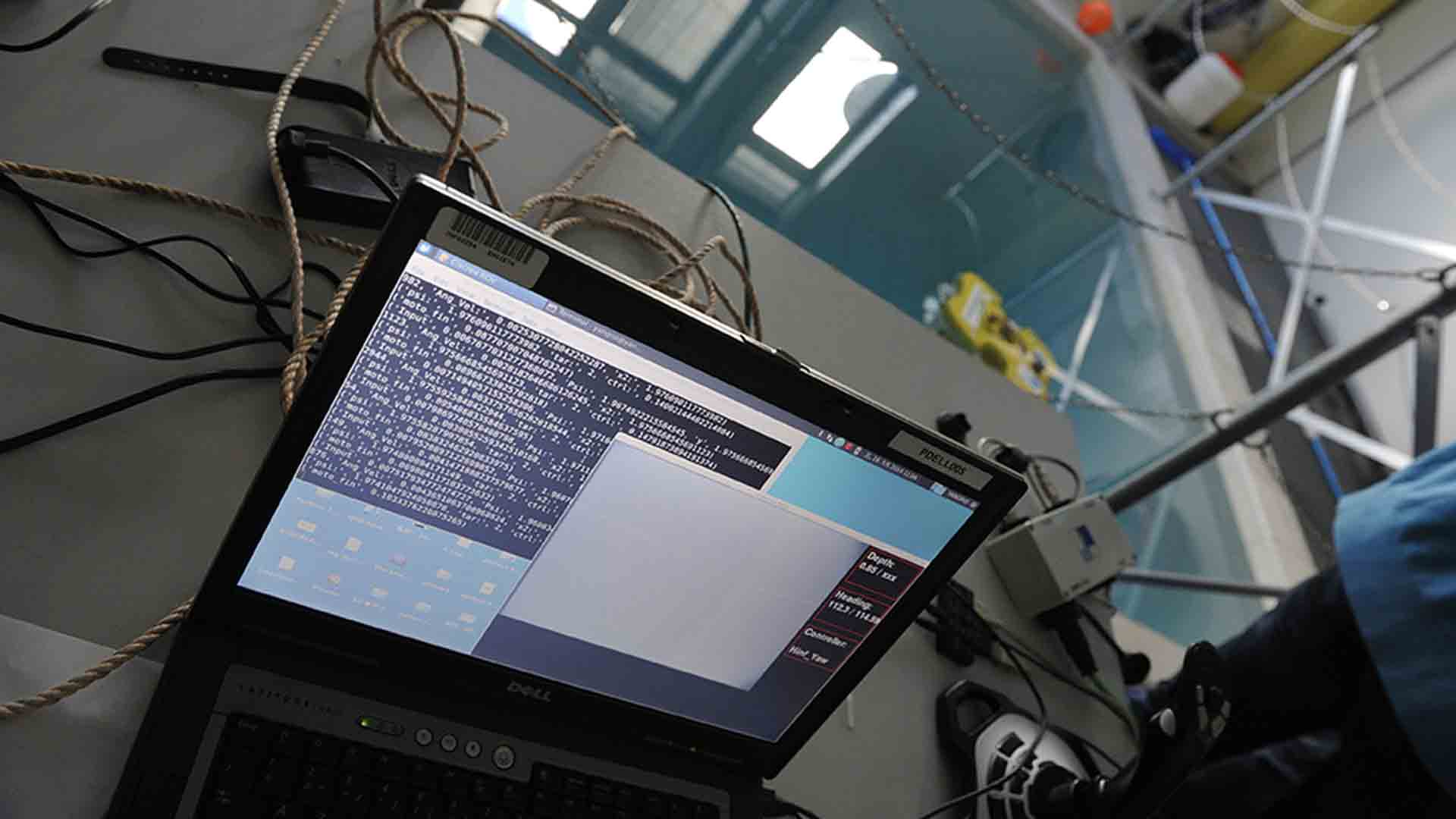
The research activities of ENSTA Bretagne’s Mobile Robotics group are carried out as part of the multi-institution laboratory Lab-STICC, in the new Robex team (which focuses on autonomous robotics for exploration purposes). The team’s scientific output is very high. It is expected to grow even further in 2021 with the arrival of a researcher from the CNRS.
We are delighted to shortly be welcoming Christophe Viel to the team. As you can see, marine and underwater robotics is an appealing and exciting field. We can also see this in our students, more and more of whom are choosing the school’s mobile robotics specialism and their profiles are highly sought-after: they have no trouble finding internships in France and abroad and get several job offers on leaving the school.
